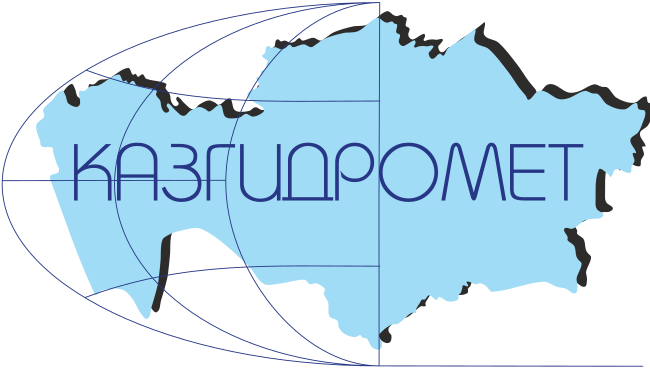ЗАРДАП ШЕККЕН ҮЙЛЕРДІҢ САНЫН, СУ БАСУ АЙМАҚТАРЫНЫҢ АУДАНЫ МЕН ШЕКАРАЛАРЫН БАҒАЛАУ ҮШІН ЖҚЗ РАДИОЛОКАЦИЯЛЫҚ ЖӘНЕ ОПТИКАЛЫҚ ДЕРЕКТЕРІН ҚОЛДАНУ
DOI:
https://doi.org/10.54668/2789-6323-2024-112-1-144-160Кілт сөздер:
инфрақызыл диапазон, поляризация, ЖҚЗ, көктемгі су тасқыны, су басу шекарасы мен ауданыАңдатпа
Мақалада 2017 жылғы көктемгі су тасқынынан су басу аймағын және зардап шеккен Атбасар қалашығының үйлері мен ғимараттарын анықтау нәтижесі келтірілген. Бұл нәтиже Sentinel-2A, Landsat-8 және Sentinel-1B орташа кеңістіктік ажыратымдылықтағы үш қол жетімді ЖҚЗ деректерін қолдану арқылы алынады. Бірінші кезеңде контраст деңгейі бойынша жақын, қысқа толқынды, жылу инфрақызыл (ИҚ) диапазоны және ЖҚЗ поляризация деректеріне көзбен талдау жүргізілді. Суреттер екі класс арасындағы жоғары контраст деңгейі бойынша таңдалды: су объектісі және су объектісі емес (жер). Екінші кезеңде су объектілеріне қатысты пикселдер үлгісінен шекті мәндер есептелді, содан кейін екілік кескіндер жасалды. Үшінші кезеңде, екілік кескіндер бұлтты әсерді жою және көктемгі су тасқынынан су басу аймағының нәтижесінде пайда болған екілік бейнені табу үшін логикалық түрде суммасы алынды. Төртінші кезеңде алынған екілік сурет Атбасар қалашығының деректері ГАЖ-ға қойылды, онда зардап шеккен үйлер мен ғимараттардың орналасуы мен саны табылды. Осы зерттеуге сәйкес, солтүстікте 200-ден астам саяжай үйлері және Атбасар қалашығының шығыс бөлігінде 9 үй су астында қалғаны анықталды. БАҚ және ресми органдардың мәліметтері бойынша Атбасардағы зардап шеккен үйлердің саны 400-ге жуық. Үш ЖҚЗ деректерімен логикалық қосу әдісі бойынша табылған зардап шеккен үйлердің саны 52% құрады. Жоғары кеңістіктік ажыратымдылықтағы ЖҚЗ деректерін пайдалану кезінде табудың дәлдігін айтарлықтай арттыруға болады. Бұл зерттеудің нәтижелері көктемгі су тасқынынан болған зиянды бағалау кезінде ТЖ қызметі, жергілікті мемлекеттік органдар, сақтандыру компаниялары үшін пайдалы болуы мүмкін.
References
Arkhipkin, O. P., L. F. Spivak, and G. N. Sagatdinova. 2010. "Development of Flood Space Monitoring in Kazakhstan." Geoscience and Remote Sensing, New Achievements: 419-436.
Benoudjit, A., and R. Guida. 2019. "A Novel Fully Automated Mapping of the Flood Extent on SAR Images Using a Supervised Classifier." Remote Sensing 11 (7).
Du, J., H. H. Zhou, P. A. Jacinthe, and K. S. Song. 2023. "Retrieval of lake water surface albedo from Sentinel-2 remote sensing imagery." Journal of Hydrology 617.
Farhadi, H., and M. Najafzadeh. 2021. "Flood Risk Mapping by Remote Sensing Data and Random Forest Technique." Water 13 (21).
Ghofrani, Z., V. Sposito, and R. Faggian. 2019. "Improving flood monitoring in rural areas using remote sensing." Water Practice and Technology 14 (1): 160-171.
Guo, J., X. P. Wang, B. Liu, K. Liu, Y. Zhang, and C. F. Wang. 2023. "Remote-Sensing Extraction of Small Water Bodies on the Loess Plateau." Water 15 (5).
Huang, M. M., and S. G. Jin. 2020. "Rapid Flood Mapping and Evaluation with a Supervised Classifier and Change Detection in Shouguang Using Sentinel-1 SAR and Sentinel-2 Optical Data." Remote Sensing 12 (13).
Kadapala, B. K. R., and K. A. Hakeem. 2023. "Region-Growing-Based Automatic Localized Adaptive Thresholding Algorithm for Water Extraction Using Sentinel-2 MSI Imagery." Ieee Transactions on Geoscience and Remote Sensing 61.
Kuntla, S. K., and P. Manjusree. 2020. "Development of an Automated Tool for Delineation of Flood Footprints from SAR Imagery for Rapid Disaster Response: A Case Study." Journal of the Indian Society of Remote Sensing 48 (6): 935-944.
Lammers, R., A. Li, S. Nag, and V. Ravindra. 2021. "Prediction models for urban flood evolution for satellite remote sensing." Journal of Hydrology 603.
Li, A. M., X. Y. Yan, and X. Kang. 2023. "Applicability study of four atmospheric correction methods in the remote sensing of lake water color." Geocarto International 38 (1).
Nikolaos, S., K. Kleomenis, D. Elias, S. Panagiotis, L. Panagiota, P. Vagelis, and C. Christos. 2019. "A Robust Remote Sensing-Spatial Modeling-Remote Sensing (R-M-R) Approach for Flood Hazard Assessment." Spatial Modeling in Gis and R for Earth and Environmental Sciences: 391-410.
Ongdas, N., F. Akiyanova, Y. Karakulov, A. Muratbayeva, and N. Zinabdin. 2020. "Application of HEC-RAS (2D) for Flood Hazard Maps Generation for Yesil (Ishim) River in Kazakhstan." Water 12 (10).
Pivaev, P. D., V. N. Kudryavtsev, E. A. Balashova, and B. Chapron. 2020. "SAR Imaging Features of Shallow Water Bathymetry." Physical Oceanography 27 (3): 290-304.
Quang, D. N., N. K. Linh, H. S. Tam, and N. T. Viet. 2021. "Remote sensing applications for reservoir water level monitoring, sustainable water surface management, and environmental risks in Quang Nam province, Vietnam." Journal of Water and Climate Change 12 (7): 3045-3063.
Sebastianelli, A., M. P. Del Rosso, S. L. Ullo, A. Radius, C. Clemente, D. Orlando, F. Biondi, and J. Wheeler. 2021. "A filtering problem: SAR speckle filtering." Artificial Intelligence Applied to Satellite-Based Remote Sensing Data for Earth Observation 98: 221-236.
Spivak, L., O. Arkhipkin, V. Pankratov, I. Vitkovskaya, and G. Sagatdinova. 2004. "Space monitoring of floods in Kazakhstan." Mathematics and Computers in Simulation 67 (4-5): 365-370.
Taloor, A. K., P. K. Thakur, and M. Jakariya. 2022. "Remote sensing and GIS applications in water science." Groundwater for Sustainable Development 19.
Wang, L. M., G. W. Jin, and X. Xiong. 2023. "Flood Duration Estimation Based on Multisensor, Multitemporal Remote Sensing: The Sardoba Reservoir Flood." Journal of Earth Science 34 (3): 868-878.
Zou, S., J. Abuduwaili, J. L. Ding, W. L. Duan, P. De Maeyer, and T. Van De Voorde. 2020. "Description and Attribution Analysis of the 2017 Spring Anomalous High Temperature Causing Floods in Kazakhstan." Journal of the Meteorological Society of Japan 98 (6): 1353-1368.
Тюменев С.Д. Водные ресурсы и водообеспеченность территории Казахстана: Учебник. – Алматы: КазНТУ, 2008. – 267 с.
Arkhipkin, O.P., Sagatdinova, G.N., 2016. The use of various optical and radar remote sensing data in operative space monitoring of flood in Kazakhstan. Journal of Siberian Federal University. Engineering & Technologies, 9(7), pp. 1045-1058.
Arkhipkin, O.P., Sagatdinova, G.N., 2017. The use of polarimetric radar data at space monitoring of high waters and floods. Sovremennye problemy distantsionnogo zondirovaniya Zemli iz kosmosa (Current problems in remote sensing of the Earth from space), 14(2), pp. 175-184.
Arkhipkin, O. P., & Sagatdinova, G. N. (2018). Possibilities of the joint use of optical and radar data in flood space monitoring. The International Archives of the Photogrammetry, Remote Sensing and Spatial Information Sciences, 42, 67-73





